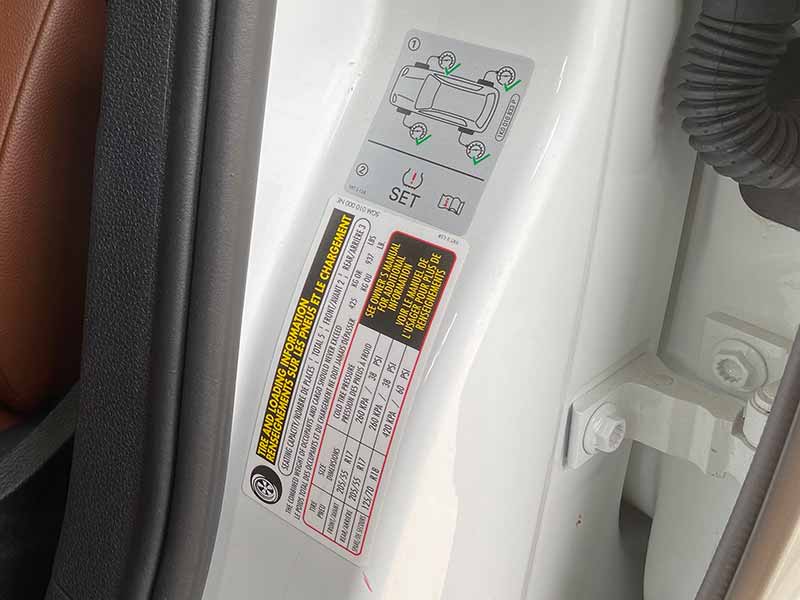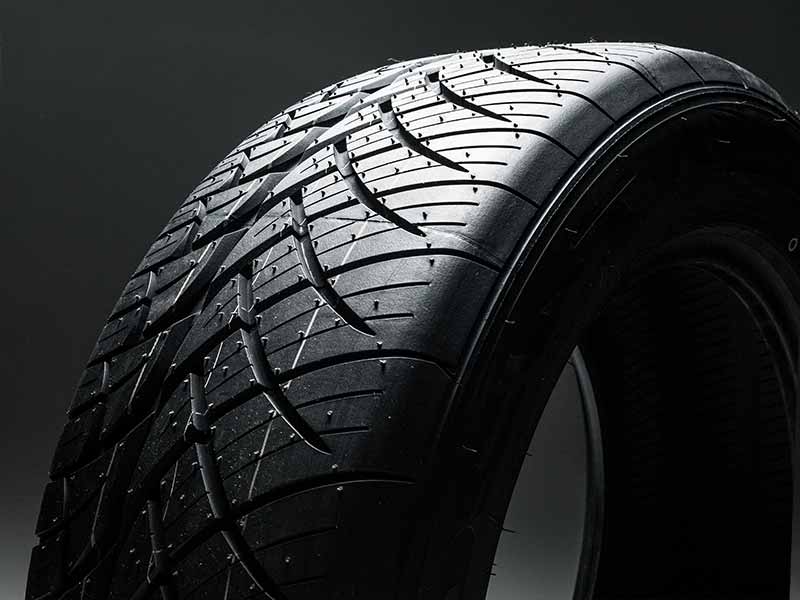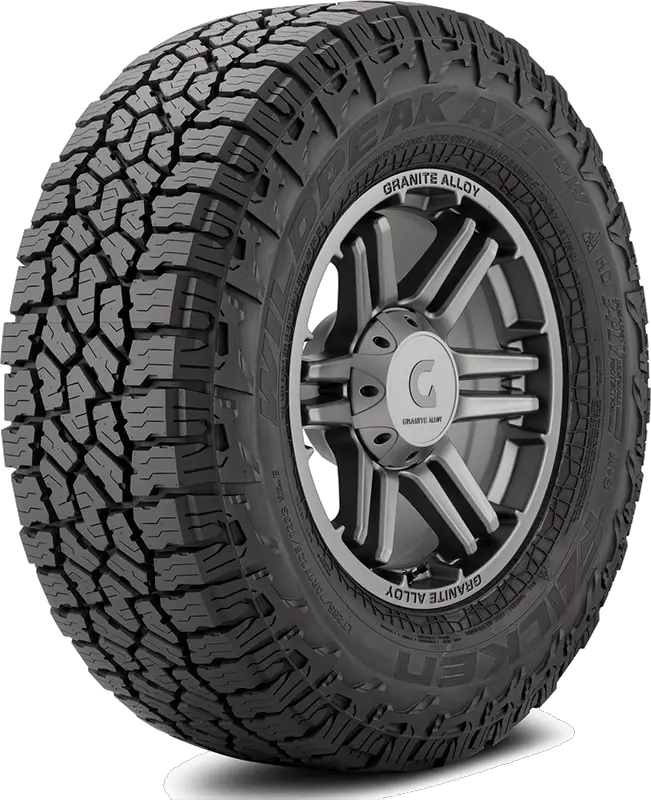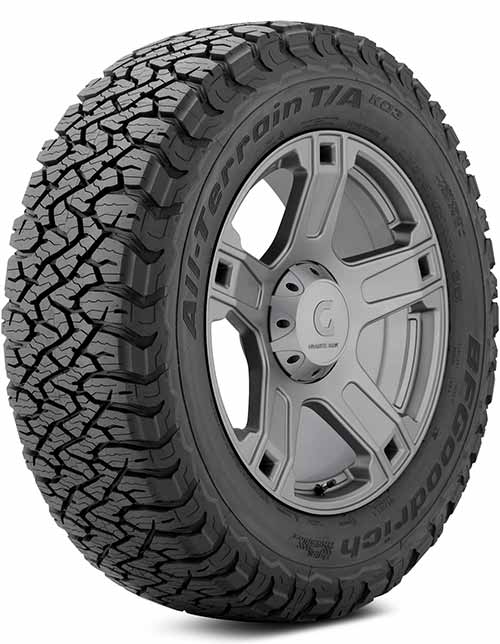Ever wondered how a change in tire size could transform your vehicle’s performance or how to ensure you’re getting the absolute best tires for your car or truck?
What Size Tires Fit My Car?
The size of the tire that fits your car can be found on the tire’s sidewall, your vehicle’s door jamb, or within the car’s manual. However, slightly different widths and overall diameters can also fit if the wheel size can accommodate it and there is enough clearance inside the wheel well.
In this article, we’ll break down everything you need to know about tire sizes, including how to read tire size notations, the importance of using the correct tire size, how to find your tire size, and how to leverage a tire size calculator.
Let’s take a closer look.
Understanding Tire Sizes
First off, let’s break down what tire size numbers mean. When you look at a tire, you’ll notice a set of numbers and letters. Let’s take a common example: 225/45R17. The first number, 225 in this case, is the tire width. This measures the width of the tire in millimeters from one sidewall to the other. But why is this important?
- It determines the amount of tire surface in contact with the road. A wider tire means more contact and, therefore, better grip – especially useful in sporty cars or on wet roads.
- Keep in mind, though, that wider tires can lead to more road noise and higher fuel consumption due to increased resistance.
Aspect Ratio: It’s Not Just About Width
The next number in our tire size, 45, is the aspect ratio. This is a little trickier. It’s not a direct measurement but rather a percentage. This number shows the height of the tire sidewall as a percentage of the tire width. In our example, the sidewall height would be 45% of 225 mm.
- A lower aspect ratio (like 45) means the tire’s sidewalls are relatively short, leading to better cornering and handling, a characteristic appreciated in sports cars.
- A higher aspect ratio (like 70 or 80) means the tire’s sidewalls are relatively tall, offering more cushioning and comfort, typical in SUVs and trucks.
The Role of the Rim: Rim Diameter
Finally, the last number in our tire size, 17, represents the rim diameter in inches. This number tells you the size of the wheel (or rim) that the tire is designed to fit. This is crucial when buying new tires because an incorrect rim diameter can lead to serious fit issues.
- Smaller rims with larger tires can offer a smoother ride, absorbing more road imperfections.
- Larger rims with lower profile tires provide a sportier look and feel, but might offer less comfort on bumpy roads.
WheelWise™ Wheel Fitment Simulator

WheelWise™ Tire Sizing Tool

From Passenger Cars to Light Trucks: Types of Tires
So far, we’ve talked about the numbers, but there’s one more part of the tire size to understand, and that’s the type of vehicle the tire is meant for. In our example (225/45R17), the ‘R’ stands for Radial, which refers to how the tire’s internal layers are arranged.
However, the key differentiation lies in tire categories:
- P: This stands for “passenger”. It’s used for passenger cars including sedans, minivans, SUVs, and light-duty pickup trucks.
- LT: This stands for “light truck”. These tires are designed for vehicles capable of carrying heavy cargo or towing large trailers.
Knowing the type of tire you need is crucial because it directly impacts the load index and speed your tires can handle safely.
Tire And Rim Association
The Tire and Rim Association, often referred to as the TRA, sets industry standards for tire sizes, load capacities, and more. Thanks to the TRA, we have a standard system of tire sizes that ensure the safety and compatibility of tires and rims. When you’re shopping for new tires, you can trust that a 17″ tire will fit a 17″ rim, no matter the brand. This standardization is key for safety and efficiency on the road.
Uniform Tire Quality Grading (UTQG)?
The UTQG is a grading system enforced by the U.S. Department of Transportation. It provides information on treadwear, traction, and temperature resistance of tires. Although it doesn’t directly relate to tire size, it’s crucial information when choosing your tires, allowing you to select tires that match your driving habits and needs. Remember, a high-performance tire might not be the best choice for a daily commuter, and vice versa.
Importance of the Right Tire Size
Having the correct tire size isn’t just a suggestion – it’s a requirement for optimum vehicle performance. If you’ve ever wondered how some cars manage to stick to the road during high-speed turns or stay stable in harsh weather, much of that has to do with the tires. Let’s talk about some vehicle handling performance advantages that come with the right tire size:
- Traction: Larger tires, due to their wider tire width, often provide better traction. This is beneficial when cornering at higher speeds or during poor weather conditions when the roads are slippery.
- Stability: Correct tire sizes ensure your vehicle’s stability, impacting your car’s ability to safely navigate turns and avoid obstacles.
Maintaining Vehicle Speed Capability
Tire size plays a significant role in maintaining the vehicle speed capability. It’s not only about how fast you can go – it’s also about how accurately your speedometer reads. You see, your car’s speedometer is calibrated based on the diameter of your original tires.
If you install larger tires, your speedometer might show that you’re going slower than you actually are, because the larger diameter means the tire covers more ground in one rotation. Conversely, if you install smaller tires, your speedometer might indicate that you’re going faster than your actual speed.
Safety First: Speed Rating and Load Index
Tires are designed to operate safely up to their rated speed and load capacity. The speed rating is a letter that corresponds to the maximum speed at which the tire can carry a load corresponding to its load index.
- If you choose a tire with a lower speed rating than recommended by your vehicle manufacturer, you might compromise the vehicle’s performance and safety.
- The load index is a numerical code that corresponds to the maximum weight that a tire can support when properly inflated. Choosing a tire with a lower load index than recommended could lead to tire failure.
Impact of Incorrect Tire Sizes
When you use incorrect tire sizes, you risk more than just inaccurate speed readings. Let’s look at a few potential issues:
- Fuel Efficiency: Incorrect tire sizes can lead to increased fuel consumption. Larger, wider tires create more rolling resistance, which means your vehicle has to work harder to move, thus using more fuel.
- Wear and Tear: The wrong tire size can lead to uneven or accelerated tire wear. This means you’ll need to replace your tires more often, which can be a significant expense.
- Vehicle Damage: Incorrect tire sizes can also cause damage to your vehicle. Tires that are too large can rub against the wheel well or suspension components, leading to costly repairs.

Finding Your Tire Size
An easy way to find out what tire size fits your car is to look at what it came with originally. The tire size based on your vehicle’s make and model is typically the best one for your car. This size was chosen by the vehicle manufacturer to provide the best balance of performance, comfort, fuel efficiency, and safety.
- If you’re unsure where to find this information, check your vehicle’s door jamb, glove box door, or fuel hatch. Here, you’ll often find a placard with your vehicle’s original tire size and recommended tire pressure.
- Remember, it’s crucial to stick to this tire size unless you’re planning on modifying your vehicle’s performance characteristics.
VIN: The Ultimate Identifier
Finding your tire size by your Vehicle Identification Number (VIN) is another reliable method. The VIN is a unique code used to identify individual motor vehicles. It contains information about your vehicle’s specifications, including the optimal tire size.
- Your VIN can typically be found on the driver’s side dashboard (visible through the windshield) or the driver’s side door jamb.
- Using the VIN to find your tire size is especially useful when shopping online, as many tire retailers provide a VIN lookup tool. This ensures that the tires you’re purchasing are a good fit for your vehicle.
Pioneer Rim & Wheel Company has a great VIN lookup tool you can use to find your tire size.
Tire Size Comparison: Weighing Your Options
Tire size comparison can come in handy when you’re considering replacement tires or new tires. With a tire size comparison, you can see how changing your tire size might affect your vehicle’s performance and safety.
- For instance, you might be considering wider tires for better grip. By comparing your current tire size to the wider size, you can see how this change might affect factors like your speedometer reading, fuel efficiency, and vehicle handling.
- Keep in mind that while changes to your tire size can improve certain aspects of your vehicle’s performance, they can also negatively impact others. It’s important to understand these trade-offs before making a decision.
Resources
Below are some links you may find helpful when learning about tires
Final Thoughts
Understanding tire sizes and their impact on your vehicle’s performance and safety is crucial, especially when it’s time to purchase new or replacement tires. From learning how to decode tire size notation to using a tire size calculator, this knowledge can equip you with the tools to make more informed decisions.
Always remember the importance of the guidelines provided by the Tire and Rim Association and the insights from the Uniform Tire Quality Grading system in selecting the best tires for your needs. Ultimately, the right tire size maintains vehicle speed capability, enhances performance, and ensures your safety on the road.
Good luck and happy motoring.




